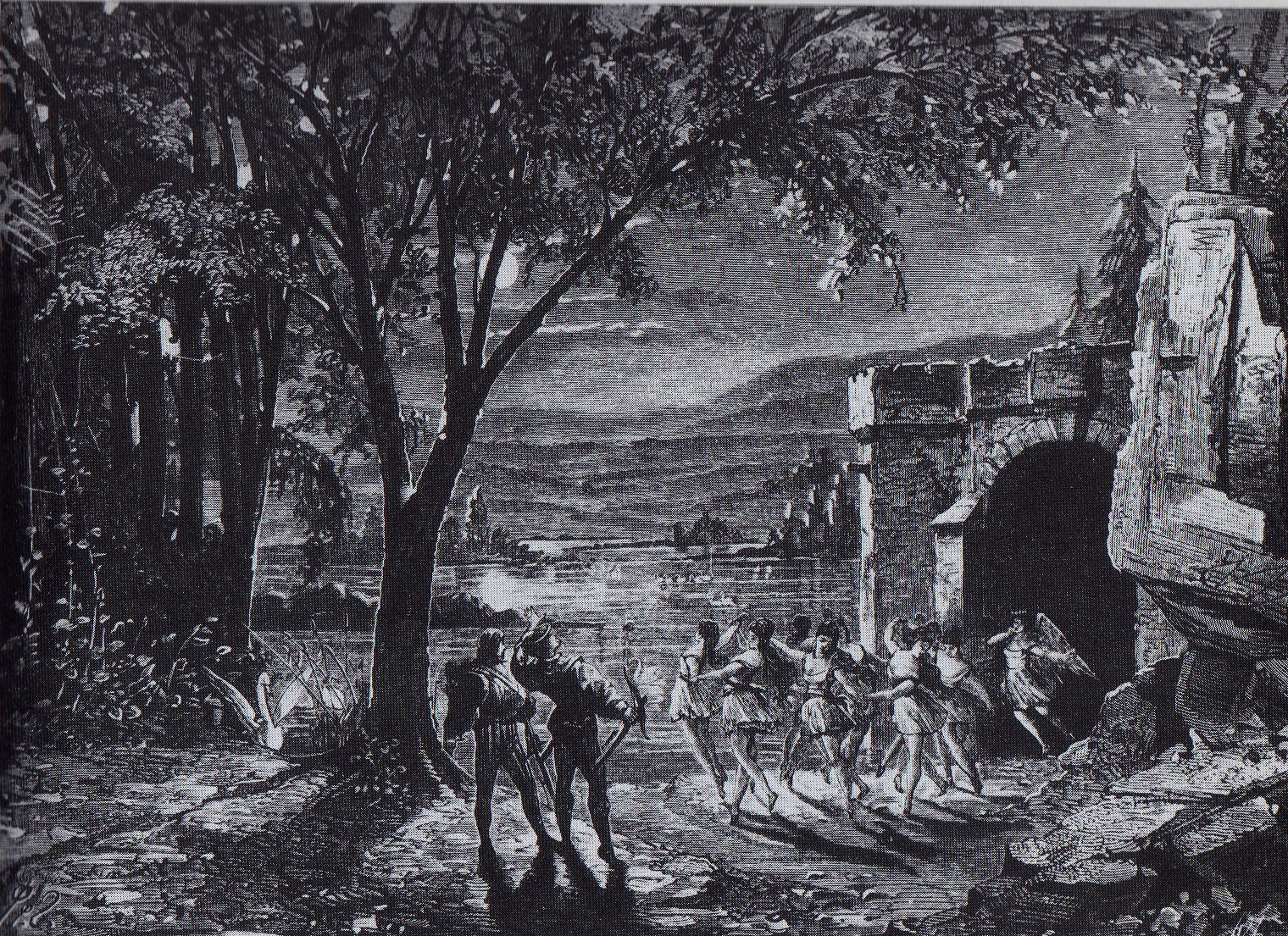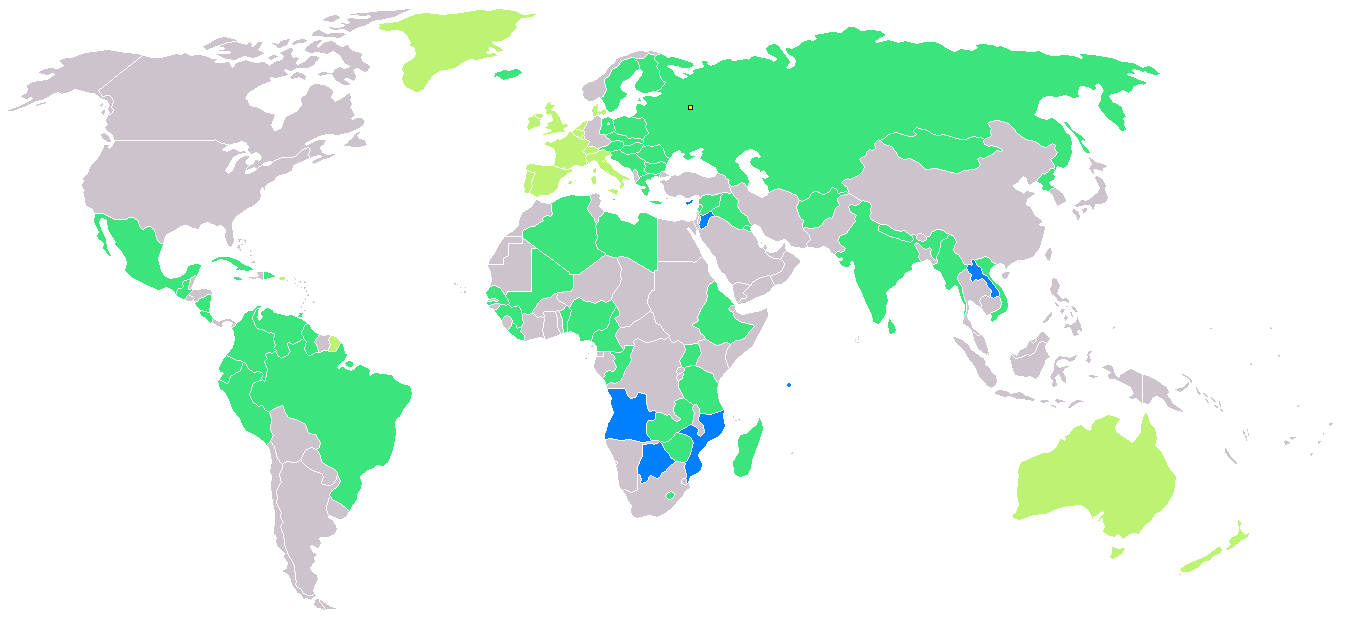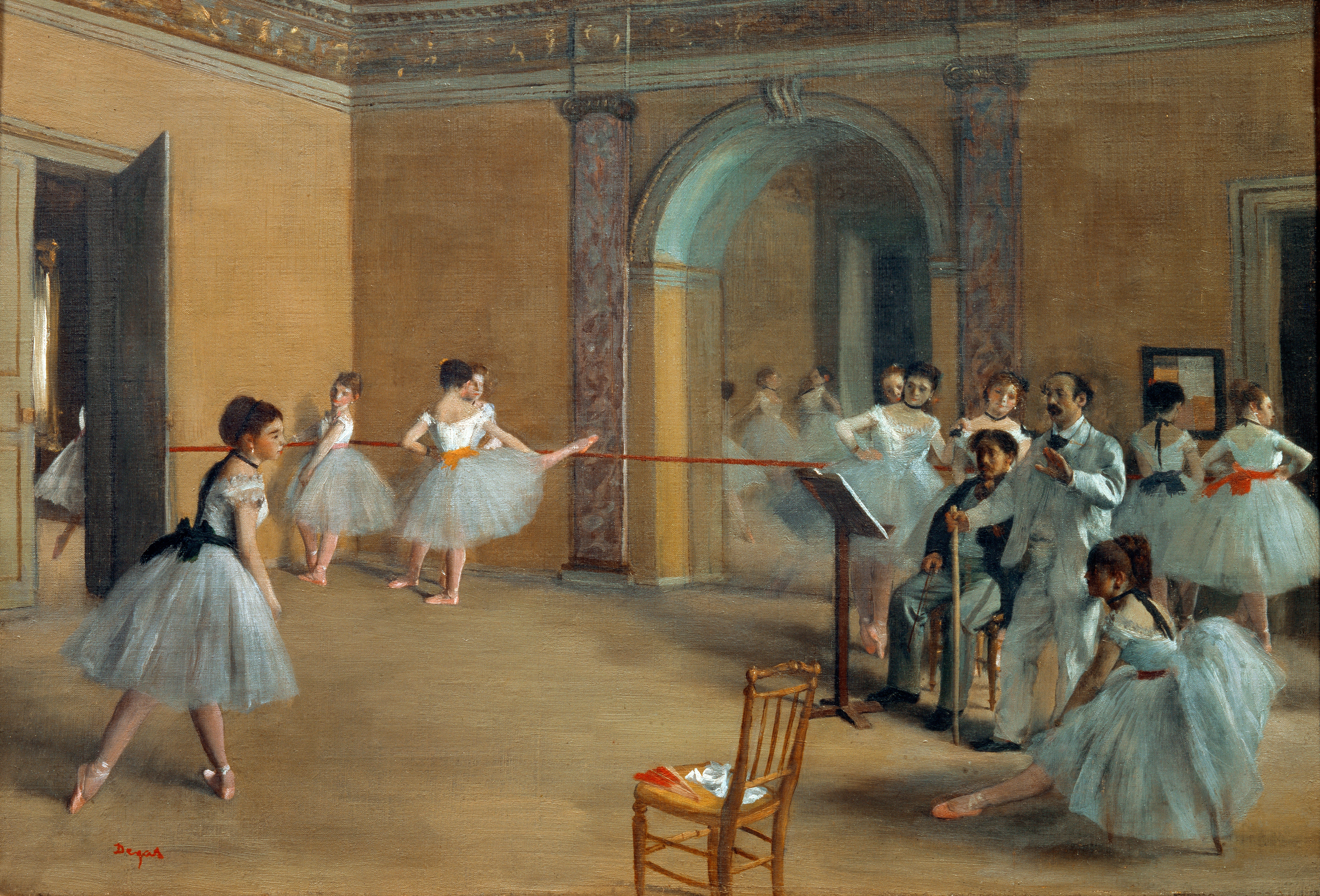|
Yury Grigorovich
Yury Nikolayevich Grigorovich (; 2 January 1927 – 19 May 2025) was a Soviet and Russian ballet dancer, ballet master, choreographer, and pedagogue who dominated the Russian ballet for 30 years, especially as artistic director of the Bolshoi Ballet from 1964 to 1995. His choreographies of '' The Stone Flower'', ''Ivan the Terrible'' and ''Romeo and Juliet'' are said to have "redefined Soviet ballet". Biography Grigorovich was born in Leningrad on 2 January 1927 to a family connected with the Imperial Russian Ballet; his uncle Georgy Rozai had been a pupil of Vaslav Nijinsky and dancer with the Mariinsky Theater and the Ballet Russes. He graduated from the Leningrad Choreographic School in 1946 and danced as a soloist of the Kirov Ballet until 1962. He choreographed Prokofiev's '' The Stone Flower'' in 1957, which became a breakthrough. In the piece based on fairy tales from the Ural Mountains, he made classical pointe dancing a means of expression. The production involve ... [...More Info...] [...Related Items...] OR: [Wikipedia] [Google] [Baidu] |
Leningrad
Saint Petersburg, formerly known as Petrograd and later Leningrad, is the List of cities and towns in Russia by population, second-largest city in Russia after Moscow. It is situated on the Neva, River Neva, at the head of the Gulf of Finland on the Baltic Sea. The city had a population of 5,601,911 residents as of 2021, with more than 6.4 million people living in the Saint Petersburg metropolitan area, metropolitan area. Saint Petersburg is the List of European cities by population within city limits, fourth-most populous city in Europe, the List of cities and towns around the Baltic Sea, most populous city on the Baltic Sea, and the world's List of northernmost items#Cities and settlements, northernmost city of more than 1 million residents. As the former capital of the Russian Empire, and a Ports of the Baltic Sea, historically strategic port, it is governed as a Federal cities of Russia, federal city. The city was founded by Tsar Peter the Great on 27 May 1703 on the s ... [...More Info...] [...Related Items...] OR: [Wikipedia] [Google] [Baidu] |
Pointe Technique
Pointe technique ( ) is part of classical ballet involving a technique that concerns ''pointe work'', in which a ballet dancer supports all body weight on the tips of fully extended feet when wearing pointe shoes. A dancer is said to be ''en pointe'' () when the body is supported in this manner, and a fully extended vertical foot is said to be ''en pointe'' when touching the floor, even when not bearing weight. Pointe technique resulted from a desire for female dancers to appear weightless and sylph-like. Although both men and women are capable of pointe work, it is most often performed by women. Extensive training and practice are required to develop the strength and technique needed for pointe work. Typically, dance teachers consider factors such as age, experience, strength and alignment when deciding whether to allow a dancer to begin pointe work. Technique Pointe technique encompasses both the mechanical and artistic aspects of pointe work. In particular, it is concerned ... [...More Info...] [...Related Items...] OR: [Wikipedia] [Google] [Baidu] |
Swan Lake
''Swan Lake'' ( rus, Лебеди́ное о́зеро, r=Lebedínoje ózero, p=lʲɪbʲɪˈdʲinəjə ˈozʲɪrə, links=no ), Op. 20, is a ballet composed by Russian composer Pyotr Ilyich Tchaikovsky in 1875–76. Despite its initial failure, it is now one of the most popular ballets of all time. The scenario, initially in two acts, was fashioned from Russian and German folk tales and tells the story of Odette, a princess turned into a swan by an evil sorcerer's curse. The choreographer of the original production was Julius Reisinger (Václav Reisinger). The ballet was premiered by the Bolshoi Ballet on at the Bolshoi Theatre in Moscow. Although it is presented in many different versions, most ballet companies base their stagings both choreographically and musically on the 1895 revival of Marius Petipa and Lev Ivanov, first staged for the Imperial Ballet on 15 January 1895, at the Mariinsky Theatre in St. Petersburg. For this revival, Tchaikovsky's score was revise ... [...More Info...] [...Related Items...] OR: [Wikipedia] [Google] [Baidu] |
The Moscow Times
''The Moscow Times'' (''MT'') is an Amsterdam-based independent English-language and Russian-language online newspaper. It was in print in Russia from 1992 until 2017 and was distributed free of charge at places frequented by English-speaking tourists and expatriates, such as hotels, cafés, embassies, and airlines, and also by subscription. The newspaper was popular among foreign citizens residing in Moscow and English-speaking Russians. In November 2015, the newspaper changed its design and type from daily to weekly (released every Thursday) and increased the number of pages to 24. The newspaper Online newspaper, became online-only in July 2017 and launched its Russian-language service in 2020. In 2022, its headquarters were relocated to Amsterdam in the Netherlands in response to Media freedom in Russia, restrictive media laws enacted in Russia after the Russian invasion of Ukraine, invasion of Ukraine. On 15 April 2022, the Russian-language website of ''The Moscow Times'' was ... [...More Info...] [...Related Items...] OR: [Wikipedia] [Google] [Baidu] |
1980 Summer Olympics
The 1980 Summer Olympics (), officially known as the Games of the XXII Olympiad () and officially branded as Moscow 1980 (), were an international multi-sport event held from 19 July to 3 August 1980 in Moscow, Soviet Union, in present-day Russia. The games were the first to be staged in an Eastern Bloc country, as well as the first Olympic Games and only Summer Olympics to be held in a Slavic languages, Slavic language-speaking country. They were also the only Summer Olympic Games to be held in a self-proclaimed communist country until the 2008 Summer Olympics held in China. These were the final Olympic Games under the International Olympic Committee, IOC Presidency of Michael Morris, 3rd Baron Killanin before he was succeeded by Juan Antonio Samaranch shortly afterward. Eighty nations were represented at the Moscow Games, the smallest number since 1956 Summer Olympics, 1956. Led by the United States, 66 countries 1980 Summer Olympics boycott, boycotted the games entirely, beca ... [...More Info...] [...Related Items...] OR: [Wikipedia] [Google] [Baidu] |
The Golden Age (Shostakovich)
''The Golden Age'' or ''The Age of Gold'' (), Opus number, Op. 22, is a ballet in three acts and six scenes by Dmitri Shostakovich to a libretto by Alexander Ivanovsky. Choreographed by Vasili Vainonen (first act), Leonid Jacobson (second act), and V. Chesnakov (third act), it premiered on 26 October 1930 at the Kirov Theatre. The work was performed eighteen times and was initially censored due to its inclusion of modern European dance styles. Plot summary The ballet is a satirical take on the political and cultural change in 1920s Europe. It follows a Soviet Association football, football (soccer) team in a Western city where they come into contact with many politically incorrect antagonistic characters such as the Diva, the Fascist, the Agent Provocateur, the Negro and others. The team falls victim to match rigging, police harassment, and unjust imprisonment by the evil bourgeoisie. The team is freed from jail when the local workers overthrow their capitalist overlords. The bal ... [...More Info...] [...Related Items...] OR: [Wikipedia] [Google] [Baidu] |
Romeo And Juliet (Prokofiev)
''Romeo and Juliet'' (), Op. 64, is a ballet by Sergei Prokofiev based on William Shakespeare's play ''Romeo and Juliet''. First composed in 1935, it was substantially revised for its Soviet premiere in early 1940. Prokofiev made from the ballet three orchestral suites and a suite for solo piano. Background and premiere Based on a synopsis created by Adrian Piotrovsky (who first suggested the subject to Prokofiev) and Sergey Radlov, the ballet was composed by Prokofiev in September 1935 to their scenario which followed the precepts of "drambalet" (dramatised ballet, officially promoted at the Kirov Ballet to replace works based primarily on choreographic display and innovation). Following Radlov's acrimonious resignation from the Kirov in June 1934, a new agreement was signed with the Bolshoi Theatre in Moscow on the understanding that Piotrovsky would remain involved. However, the ballet's original happy ending (contrary to Shakespeare) provoked controversy among Soviet cult ... [...More Info...] [...Related Items...] OR: [Wikipedia] [Google] [Baidu] |
Royal Opera House
The Royal Opera House (ROH) is a theatre in Covent Garden, central London. The building is often referred to as simply Covent Garden, after a previous use of the site. The ROH is the main home of The Royal Opera, The Royal Ballet, and the Orchestra of the Royal Opera House (now known collectively as the Royal Ballet and Opera). The first theatre on the site, the Theatre Royal (1732), served primarily as a playhouse for the first hundred years of its history. In 1734, the first ballet was presented. A year later, the first season of operas, by George Frideric Handel, began. Many of his operas and oratorios were specifically written for Covent Garden and had their premieres there. The current building is the third theatre on the site, following disastrous fires in 1808 and 1856 to previous buildings. The façade, foyer, and auditorium date from 1858, but almost every other element of the present complex dates from an extensive reconstruction in the 1990s. The main auditorium ... [...More Info...] [...Related Items...] OR: [Wikipedia] [Google] [Baidu] |
Spartacus (ballet)
''Spartacus'' () is a ballet by Aram Khachaturian (1903–1978). The work follows the exploits of Spartacus, the leader of the Slavery, slave uprising against the Ancient Rome, Romans known as the Third Servile War, although the ballet's storyline takes considerable liberties with the historical record. Khachaturian composed ''Spartacus'' in 1954, and was awarded a Lenin Prize for the composition that same year. It was first staged in Leningrad on 27 December 1956, as choreographed by Leonid Yakobson, for the Kirov Theatre of Opera and Ballet (Mariinsky Theatre), where it stayed in repertory for many years, but only with qualified success since Yakobson abandoned conventional ''pointe'' in his choreography. Yakobson restaged his version for the Bolshoi in 1962 and it was part of the Bolshoi's 1962 tour to New York. The ballet received its first staging at the Bolshoi Theatre, Moscow in 1958, choreographed by Igor Moiseyev; however it was the 1968 production, choreographed by Yury ... [...More Info...] [...Related Items...] OR: [Wikipedia] [Google] [Baidu] |
The Nutcracker
''The Nutcracker'' (, ), Opus number, Op. 71, is an 1892 two-act classical ballet (conceived as a '; ) by Pyotr Ilyich Tchaikovsky, set on Christmas Eve at the foot of a Christmas tree in a child's imagination featuring a Nutcracker doll. The plot is an adaptation of Alexandre Dumas's 1844 short story ''The Nutcracker'', itself a retelling of E. T. A. Hoffmann's 1816 short story ''The Nutcracker and the Mouse King''. The ballet's first choreographer was Marius Petipa, with whom Tchaikovsky had worked three years earlier on ''The Sleeping Beauty'', assisted by Lev Ivanov. Although the complete and staged ''The Nutcracker'' ballet was not initially as successful as the 20-minute ''Nutcracker Suite'' that Tchaikovsky had premiered nine months earlier, it became popular in later years. Since the late 1960s, ''The Nutcracker'' has been danced by many ballet companies, especially in North America. Major American ballet companies generate around 40% of their annual ticket ... [...More Info...] [...Related Items...] OR: [Wikipedia] [Google] [Baidu] |
Narrative Ballet
A narrative ballet, also known as classical ballet or story ballet is a form of ballet that has a plot and characters. It is typically a production with full sets and costumes. It was an invention of the eighteenth century. Most romantic and classical ballets of the 19th century were narrative ballets. Among the most well known are ''Swan Lake'', '' The Sleeping Beauty'', and ''Cinderella''. For these and other classic narrative ballets it is common for ballet directors to create their own choreography, while maintaining the plot and music used by the original 19th-century choreographer. Kenneth MacMillan and Frederick Ashton were neoclassical ballet choreographers that created original narrative ballets in the 20th century. Plots frequently revolve around intense love, expression, fantasy, and tragedy. The most popular classic ballets are based on fairytales and magical myths. For example, in ''Swan Lake'', the main character Odette is put under a spell by an evil sorcerer ... [...More Info...] [...Related Items...] OR: [Wikipedia] [Google] [Baidu] |
Classical Ballet
Classical ballet is any of the traditional, formal styles of ballet that exclusively employ classical ballet technique. It is known for its aesthetics and rigorous technique (such as en pointe, pointe work, turnout (ballet), turnout of the legs, and high extensions), its flowing, precise movements, and its ethereal qualities. There are stylistic variations related to an area or origin, which are denoted by classifications such as Russian ballet, French ballet, British ballet and Italian ballet. For example, Russian ballet features high extensions and dynamic turns, whereas Italian ballet tends to be more grounded, with a focus on fast, intricate footwork. Many of the stylistic variations are associated with specific training methods that have been named after their originators. Despite these variations, the performance and vocabulary of classical ballet are largely consistent throughout the world. History Ballet originated in the Italian Renaissance courts and was brought to ... [...More Info...] [...Related Items...] OR: [Wikipedia] [Google] [Baidu] |






